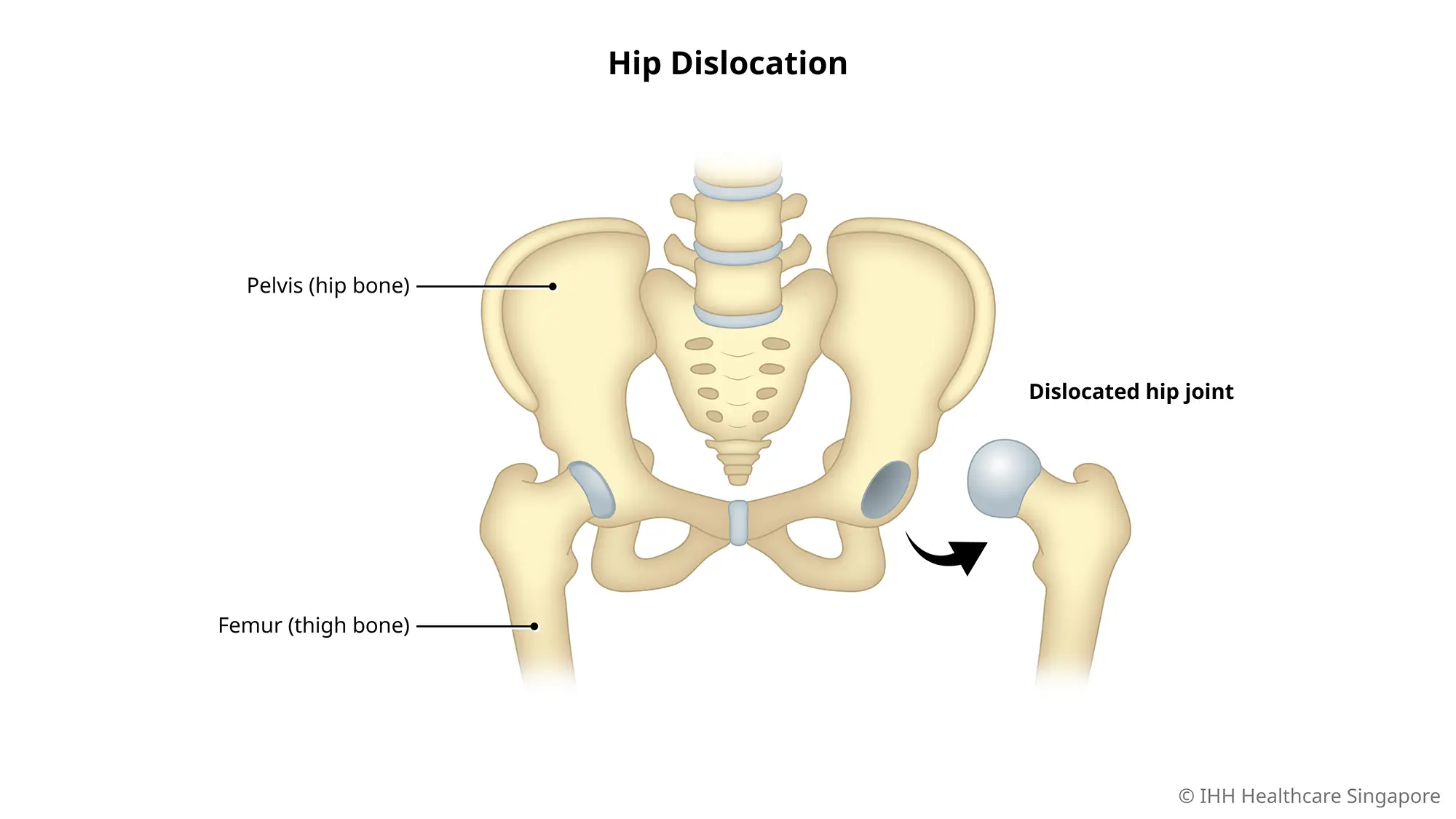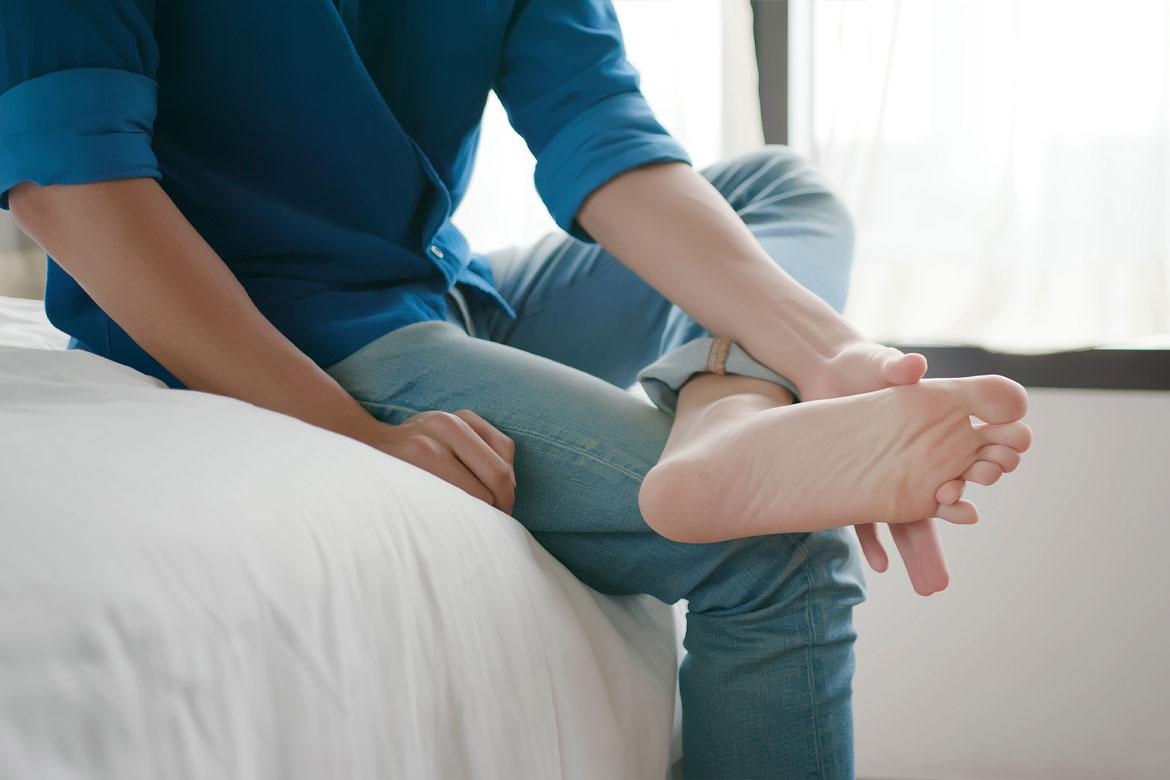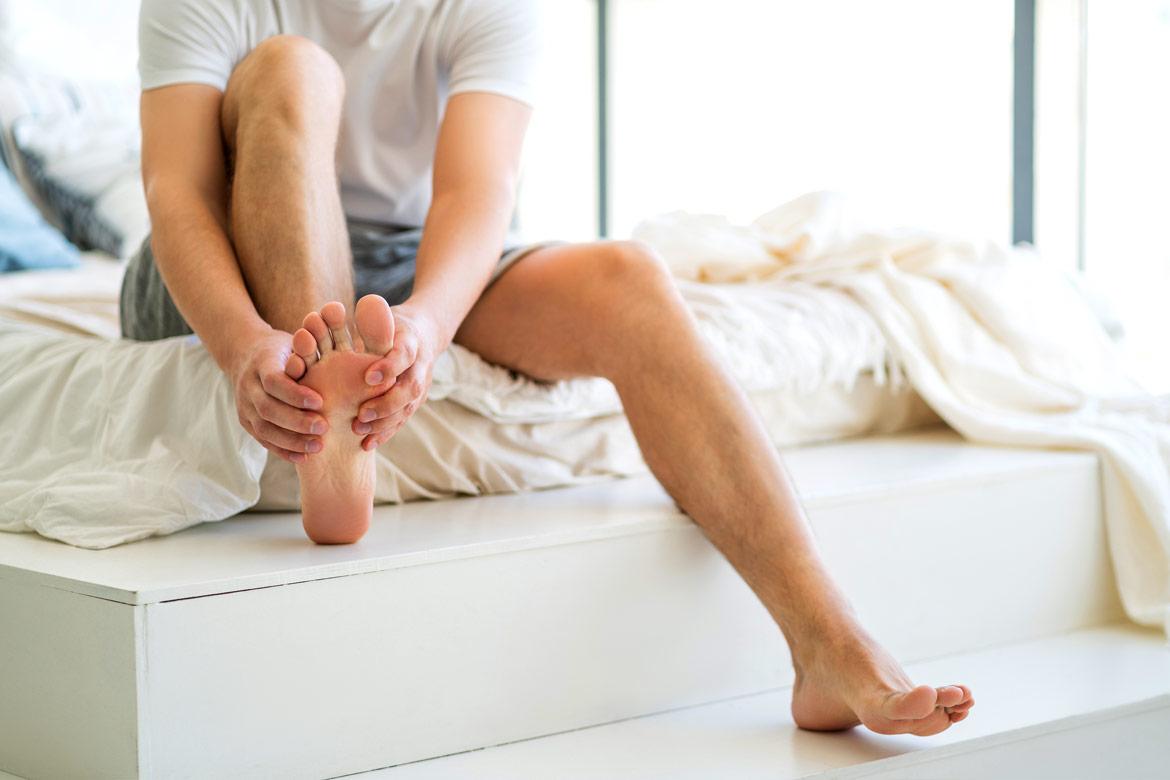Hip Dislocation
What is a hip dislocation?
The hip is a "ball-and-socket" joint. In a normal hip, the ball at the upper end of the thighbone (femur) fits firmly into the socket (acetabulum), which is part of the large pelvis bone.
Hip dislocations are uncommon and are usually due to a big impact. This forces the thighbone to fall out from its normal position in the hip and is known as traumatic hip dislocation. If the thighbone did not come out of the socket fully, it is called a hip subluxation, or partial dislocation.
Another type of hip dislocation, known as congenital hip dislocation or developmental dysplasia of the hip, is a developmental condition where a child is born with an unstable hip.
Note: A traumatic hip dislocation is a medical emergency. Do not try to move the injured person. Seek medical help immediately.
Types of hip dislocation
Hip dislocation can occur in 2 directions:
- Posterior dislocation, the thighbone is pushed out of the socket in a backwards direction. This leaves the lower leg in a fixed position, with the knee and foot rotated toward the middle of the body. This is the most common type of hip dislocation.
- In anterior dislocation, the thighbone slips out of its socket in a forward direction. The hip will be bent only slightly, and the leg will rotate out and away from the middle of the body.
What are the symptoms of a hip dislocation?
Hip dislocation leads to:
- Pain in the groin
- Pain on hip movement
- Difficulty with standing and walking
Other associated symptoms can include:
- Inability to move the hip
- Inability to bear weight on the affected leg
- Deformity in the hip or a shorter appearance of the legs
- Bruising or swelling around the affected area
What causes a hip dislocation?
Hip dislocation can be caused by a major impact such as a motor accident or a fall from height that knocks the head of the thighbone out of its socket. This is also called a traumatic hip dislocation.
What are the risk factors for hip dislocation?
Your risk of hip dislocation is higher if you:
- Encounter any high-impact, high-energy accident, such as those involving motor vehicles.
- Engage in high-impact athletic sports such as skiing.
What are the complications and related diseases of a hip dislocation?
Hip dislocation can have long-term consequences, particularly if there are also fractures in the bones:
- Sciatic nerve injury. This nerve extends from the lower back down the back of the legs. It can be stretched and damaged in a hip dislocation, causing weakness in the lower leg.
- Osteonecrosis, also called avascular necrosis. If the thighbone is pushed out of the socket, it can tear blood vessels and nerves. When the blood supply to the femoral head (the ball of the hip joint) is damaged, the femoral head can die. This is a painful condition that can lead to the destruction of the hip joint, and arthritis.
- Arthritis. The protective cartilage covering the bone may be damaged when hip dislocation occurs. This increases the risk of developing arthritis in the joint. Arthritis can eventually lead to hip pain and difficulty walking, resulting in the need for a total hip replacement.
- Recurrent hip dislocation. If the injury does not heal completely, you may be at risk of further dislocations.











